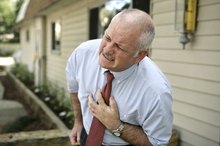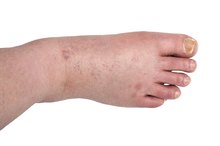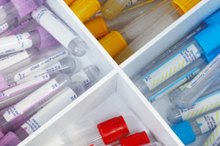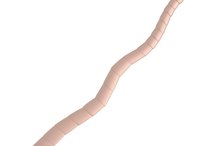Causes of Swollen & Painful Legs From the Groin Down
When swelling occurs in both legs, it is usually caused by edema, which is an accumulation of fluid in the body tissues. Swelling of the legs is often accompanied by tenderness and pain in the affected area. Generalized edema commonly occurs as a result of damage to major organs or organ failure that disrupts the normal filtration process and causes the body to retain water.
If you are experiencing serious medical symptoms, seek emergency treatment immediately.
Glomerulonephritis
The kidneys are bean-shaped organs that are an important part of the endocrine system. They are responsible for concentrating urine by filtering waste and excess fluid from the blood. Each kidney contains millions of glomeruli, small structures that are allow for proper filtration. Glomerulonephritis is a condition that occurs when the glomeruli become inflamed and lose their ability to filter 1. Other symptoms of glomerulonephritis include:
- blood in the urine
- foamy urine
- cough
- diarrhea
- fever
- joint aches
- loss of appetite
- shortness of breath 1
- The kidneys are bean-shaped organs that are an important part of the endocrine system.
- They are responsible for concentrating urine by filtering waste and excess fluid from the blood.
Cirrhosis
What Are the Causes of Stomach Edema?
Learn More
Cirrhosis is the extensive scarring of the liver that develops gradually due to chronic liver damage. Every time the liver is exposed to a toxin, healthy tissue is destroyed and the liver regenerates itself by replacing the healthy tissue with scar tissue. When the liver is constantly exposed to toxins, such as alcohol, the scar tissue accumulates and begins to outweigh healthy tissue. This results in loss of proper liver function. When the liver is not functioning properly, fluid accumulates in the body, causing swelling and pain, especially in the legs and abdomen. Other symptoms of cirrhosis include:
- weakness
- fatigue
- loss of appetite
- nausea
- vomiting
- weight loss
- the appearance of spider-like blood vessels on the skin surface
- according to the National Digestive Diseases Information Clearinghouse
- Cirrhosis is the extensive scarring of the liver that develops gradually due to chronic liver damage.
- When the liver is constantly exposed to toxins, such as alcohol, the scar tissue accumulates and begins to outweigh healthy tissue.
Heart Failure
Heart failure is defined as a lack of ability for the heart to pump enough blood to meet the body’s needs 2. Heart failure usually develops as a result of chronic conditions that damage the heart and the surrounding blood vessels, such as high blood pressure and coronary artery disease 2. According to MayoClinic.com, heart failure usually affects the left side of the heart, but may affect the right side or both sides as well 2. Heart failure also results in shortness of breath, fatigue, weakness, irregular heartbeat, persistent cough, abdominal swelling, lack of appetite, nausea and difficulty concentrating 2.cause:
- Heart failure also results in shortness of breath
- fatigue
- weakness
- irregular heartbeat
- persistent cough
- abdominal swelling
- lack of appetite
- nausea
- difficulty concentrating 2
Related Articles
References
- MedlinePlus: Glomerulonephritis
- Mayo Clinic: Heart Failure
- U.S. National Library of Medicine. MedlinePlus. Warning signs and symptoms of heart disease
- Harvard Medical School. A new warning sign for heart failure: "Bendopnea"
- American Heart Association. Advanced Heart Failure
- American Heart Association. Common Tests for Heart Failure
- American Heart Association. Medications Used to Treat Heart Failure
- American Heart Association. Devices and Surgical Procedures to Treat Heart Failure
- American Heart Association. Lifestyle Changes for Heart Failure
- Ibrahim NE, Januzzi JL Jr. The Future of Biomarker-Guided Therapy for Heart Failure After the Guiding Evidence-Based Therapy Using Biomarker Intensified Treatment in Heart Failure (GUIDE-IT) Study. Curr Heart Fail Rep. 2018 Apr;15(2):37-43. doi: 10.1007/s11897-018-0381-0.
Writer Bio
Lindsay Boyers has a Bachelor of Science in nutrition from Framingham State College and a certificate in holistic nutrition from the American College of Healthcare Sciences. She is also a licensed aesthetician with advanced training in skincare and makeup. She plans to continue on with her education, complete a master's degree program in nutrition and, ultimately, become a registered dietitian.









